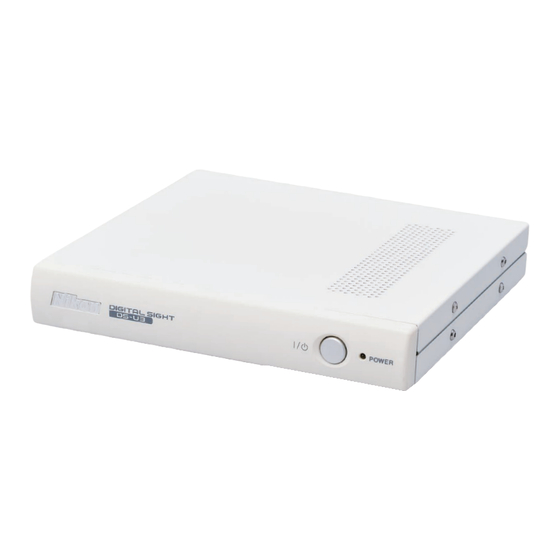Nikon DS-Ri1 Anleitung Handbuch - Seite 23
Blättern Sie online oder laden Sie pdf Anleitung Handbuch für Kamera-Zubehör Nikon DS-Ri1 herunter. Nikon DS-Ri1 49 Seiten. Ds camera control unit/camera heads
Auch für Nikon DS-Ri1: Anleitung Handbuch (49 seiten)

When the camera head is mounted on a microscope, set up the microscope as described below.
(1) Use the appropriate filters
When capturing a color image:
Insert the NCB filter into the optical path.
When capturing a monochrome image:
Insert the appropriate filter into the optical path, depending on the photographic purpose.
Normally, inserting a green interference filter (GIF) will heighten contrast.
Additionally, contrast is enhanced by using a filter with a color complementary to the
specimen.
Notes
*
The method for inserting and removing a filter differs depending on the microscopes.
Refer to the instruction manual of the microscope in use.
*
A third-party color compensation filter (CC filter) can be inserted into the
illumination optical path of the microscope to compensate for changes in color
balance caused by the length of exposure time.
*
When using a phase contrast microscope or an interference microscope (two
luminous fluxes or multiple luminous fluxes), you can enhance contrast using a
green interference filter (GIF) or a monochrome interference filter (IF).
*
We recommend simultaneous use of an NCB filter and a green interference filter
(GIF) for the DS-Qi1Mc.
*
Some microscopes may require a heat-wave absorption filter.
Terms
What is an NCB filter?
An NCB (neutral color balance) filter is a color-balancing compensation filter used to adjust
color temperature to daylight values in microscopes that use a halogen bulb as a light
source.
What is a complementary color?
For example, green and magenta, red and cyan, and blue and yellow are all pairs of
complementary colors. When complementary colors overlap, their respective hues cancel
each other out.
Chapter 5
Microscope Setting
Microscope Setting
- 15 -
5
